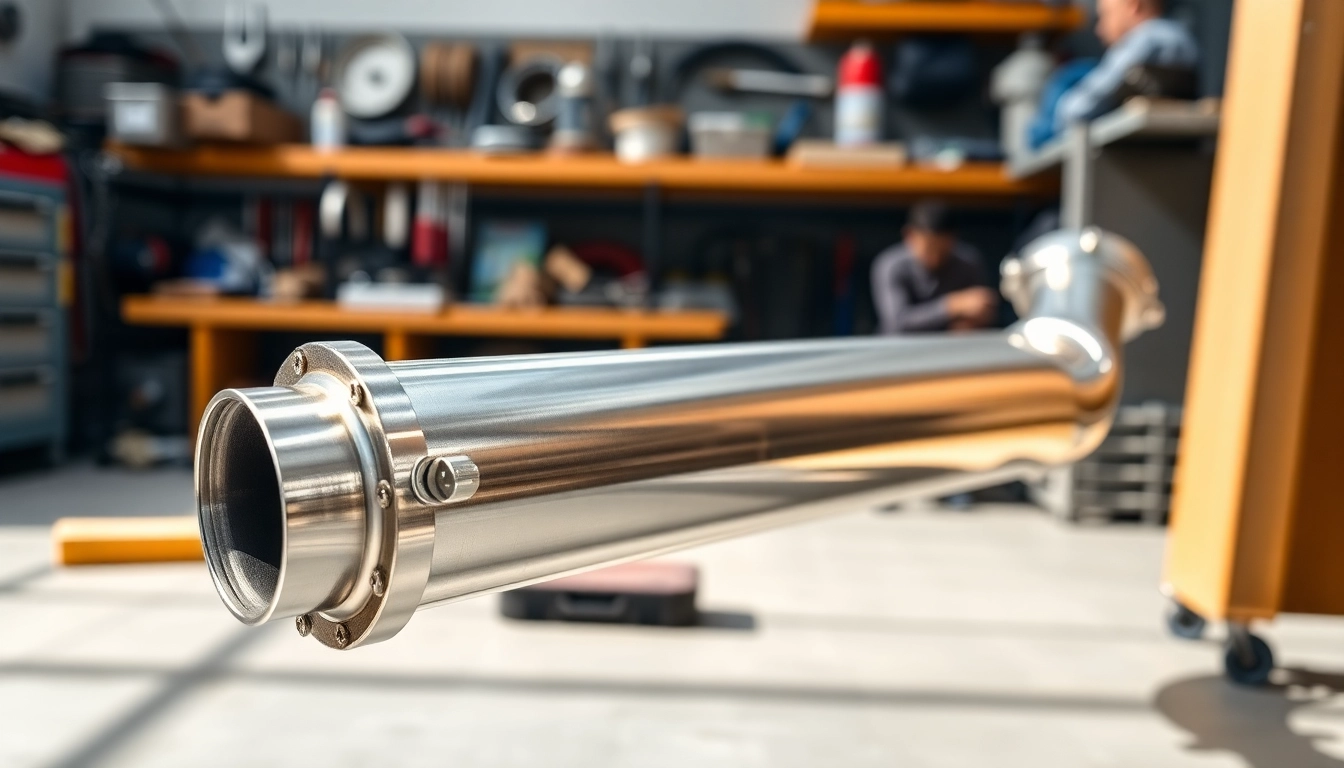Understanding the Basics of Single Midpipe
What is a Single Midpipe?
A single midpipe is a component of a vehicle’s exhaust system, providing a functional connection between the vehicle’s components, primarily linking the downpipes or header to the rear exhaust. It plays a crucial role in optimizing exhaust flow, enhancing engine performance, and potentially altering the sound of the vehicle. Depending on its design, a single midpipe can either encourage more efficient exhaust flow or create a raucous auditory experience for the driver and passengers. It is essential to differentiate it from a dual midpipe or equal-length midpipes, which serve different purposes in exhaust management.
Benefits of a Single Midpipe
The adoption of a single midpipe in automotive applications entails several notable benefits:
- Enhanced Performance: A well-designed single midpipe helps reduce back pressure, allowing the engine to expel exhaust gases more efficiently, which can result in increased horsepower and torque.
- Sound Improvement: Many enthusiasts choose single midpipes for their unique sound characteristics. They often produce a more aggressive exhaust note, which can enhance the driving experience.
- Weight Reduction: Single midpipes are typically lighter than their dual counterparts, contributing to weight saving, which can improve overall vehicle dynamics.
- Ease of Installation: Compared to more complex exhaust systems, single midpipes often require less time and fewer resources to install, making them a favorite among DIY enthusiasts.
Common Materials Used
Single midpipes can be constructed from various materials, each of which impacts performance, durability, and cost:
- Stainless Steel: This is the most popular choice due to its excellent corrosion resistance, strength, and ability to withstand high temperatures.
- Aluminized Steel: A more affordable alternative, this material is coated with aluminum to improve rust resistance but may not hold up as long as stainless steel.
- Titanium: Although much more expensive, titanium midpipes are lighter and highly resistant to heat and corrosion. They are favored by high-performance applications.
Key Considerations When Selecting a Single Midpipe
Compatibility with Vehicle Models
When selecting a single midpipe, ensure its compatibility with your vehicle model. Different makes and models may require specific dimensions, flanges, and bends to fit correctly. Many aftermarket single midpipes are designed to fit a range of vehicle types, but it is critical to verify specifications to avoid installation issues.
Sound Characteristics of Single Midpipe
The sound output of a single midpipe is paramount for automotive enthusiasts. When upgraded, it can transform the exhaust note significantly:
- Volume: A single midpipe typically increases the overall volume of the exhaust sound, providing a more pronounced auditory experience.
- Tone: Depending on the design and material, the tone can shift from deep and throaty to sharp and aggressive.
- Resonance: The design may introduce or mitigate resonant frequencies, affecting the comfort level within the vehicle cabin.
Performance Impact on Your Car
The impact of a single midpipe on performance can be substantial. Drivers often witness:
- Increased Horsepower: More efficient exhaust flow can translate to better engine performance.
- Improved Throttle Response: Altering the exhaust flow dynamics can provide a quicker throttle response, enhancing drivability.
- Fuel Efficiency: In some cases, improved exhaust flow can lead to enhanced fuel efficiency, although this depends on various factors including driving habits.
Installation Insights for Single Midpipe
Tools Required for Installation
Installing a single midpipe usually requires a few essential tools, ensuring a smooth and successful process:
- Jack and jack stands or ramps
- Sockets and wrenches
- Cutting tool (if modifying existing pipes)
- Torque wrench
- Exhaust clamps
- Safety glasses and gloves
Step-by-Step Installation Guide
- Preparation: Start by raising the vehicle securely using jacks or ramps.
- Remove Old Exhaust Components: If applicable, detach the existing midpipe, freeing it from any connected pipes and supports.
- Install the Single Midpipe: Position the new single midpipe in place and attach it using clamps.
- Tighten Connections: Use a torque wrench to ensure all bolts and connections are secure.
- Check for Leaks: Once installed, check for exhaust leaks by running the engine for a short period.
Maintaining Your Single Midpipe
Maintaining your single midpipe is essential for longevity and optimal performance. Regular inspections for rust, loose connections, and exhaust leaks should be part of your vehicle maintenance routine. Cleaning the midpipe and surrounding components can prevent buildup that may inhibit performance.
Comparing Single Midpipe to Other Options
Single Midpipe vs Equal Length Midpipe
A clear choice exists between single midpipes and equal-length midpipes, each catering to different preferences:
- Single Midpipe: Often preferred for its simplicity and weight savings.
- Equal-Length Midpipe: Tends to produce a more balanced exhaust note, but may weigh more and complicate installation.
Performance Comparisons and Preferences
Performance comparisons between these options can depend on the specific engine setup and intended use. Single midpipes can enhance sound and weight reduction, while equal-length options may shine in power generation due to optimized exhaust timing.
Cost-effectiveness of Single Midpipe
From a cost perspective, single midpipes generally offer better value compared to their dual and equal-length counterparts. While high-end options can be expensive, a well-made single midpipe often provides significant performance gains without breaking the bank.
Conclusion: Making the Best Choice
Summarizing Key Takeaways
In summary, the selection of a single midpipe requires careful consideration of compatibility, sound characteristics, and performance impacts. When chosen correctly, it can enhance not only the aesthetic appeal of your vehicle but also its overall driving experience.
Resources for Further Research
For those looking to delve deeper, there are abundant resources available that focus on automotive exhaust systems, performance enhancements, and user testimonials that can guide your purchasing decisions. Community forums and automotive enthusiast websites serve as excellent platforms for shared experiences and advice.
Expert Recommendations on Single Midpipe
Ultimately, the choice to invest in a single midpipe should ideally align with your performance goals and aesthetic preferences. Conducting thorough research, such as exploring technical specifications and reading customer reviews, can lead you to a product that will enhance your vehicle effectively. As you explore options, consider checking out how a single midpipe may offer an upgrade to your performance needs.



